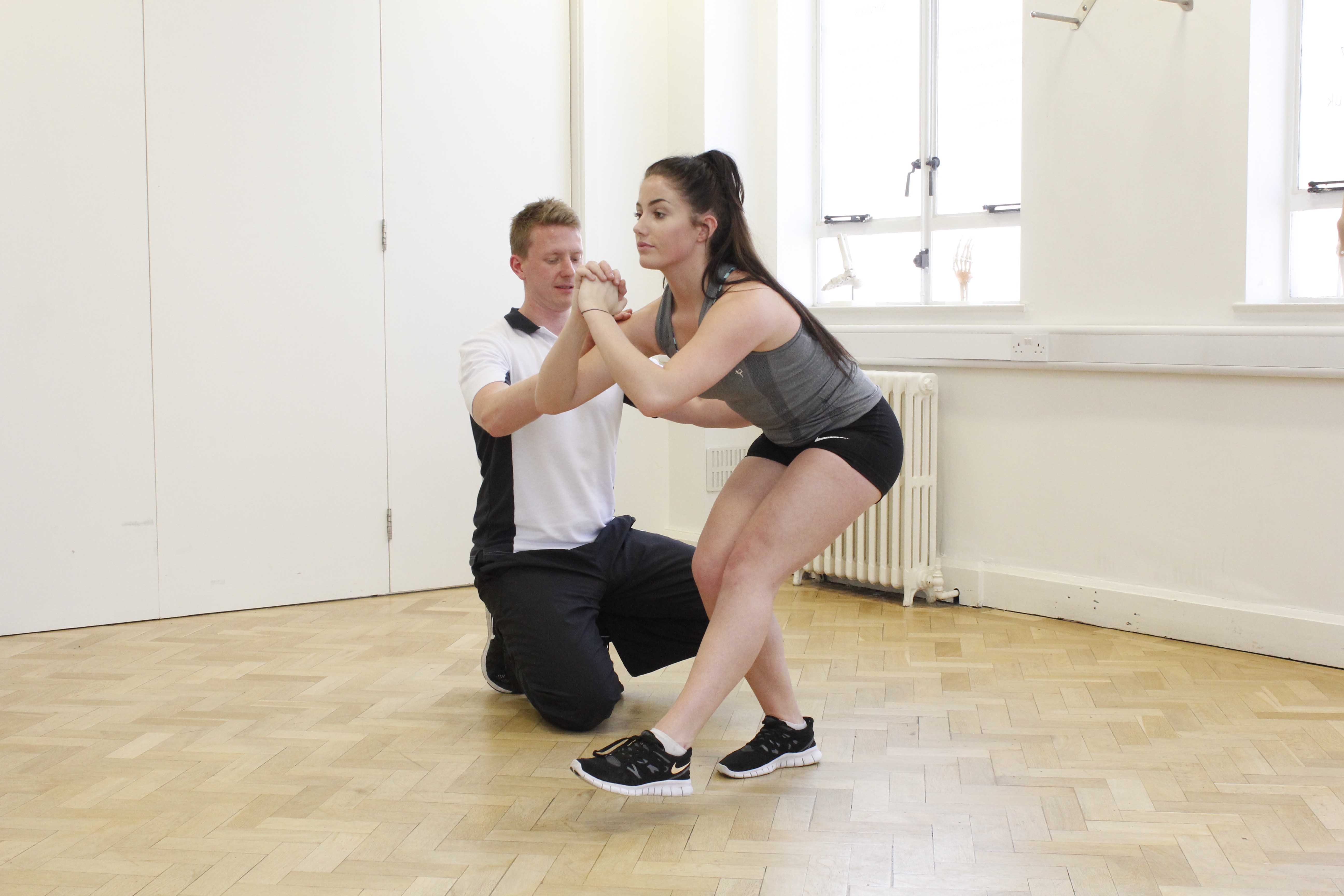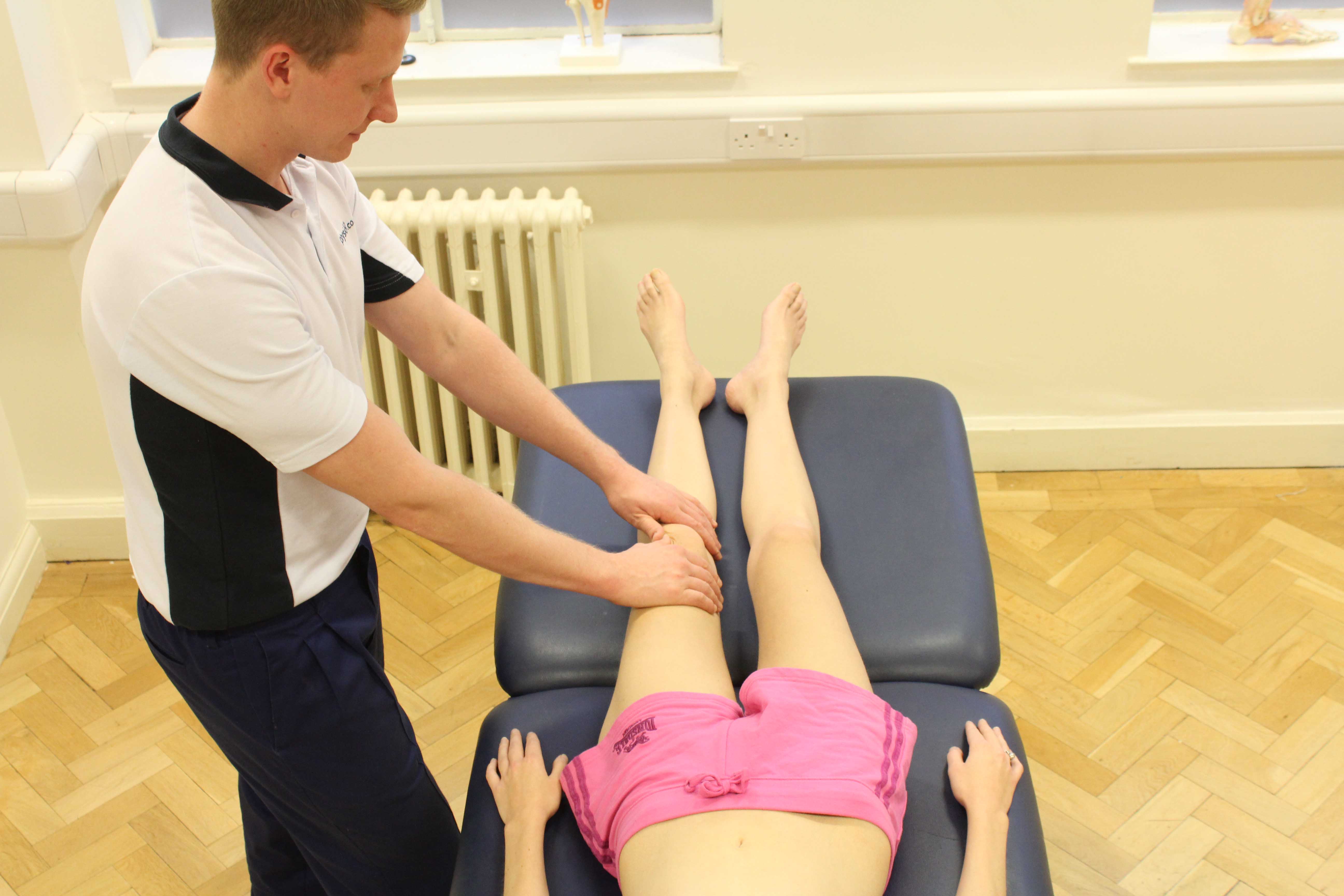The structures behind the knee are not commonly injured as it takes a high impact trauma or hyperextension injury to damage them. Posterior corner reconstructions are therefore most commonly seen in the sporting population. Physical examination or investigation looks at the ligaments and muscles behind the knee to identify any instability.
 Above: Stability and strength training for the knee, supervised by a MSK Physiotherapist
Above: Stability and strength training for the knee, supervised by a MSK PhysiotherapistPosterior Corner Reconstruction Indications
Posterior corner reconstruction of the knee is indicated after a physical examination, MRI or arthroscopy once the extent of damage has been confirmed. If the injury is severe surgery will be indicated immediately. Otherwise, surgery is only indicated once conservative management has failed. Conservative treatment involves complete rest to allow for healing for grade one and two tears.
Posterior Corner Reconstruction Procedure
Surgery for posterior corner reconstruction depends on if the injury is acute or chronic and if it is an isolated posterolateral injury or combined with ligamentous injury
 Above: Mobilisations of the knee joint during an assessment by a MSK therapist
Above: Mobilisations of the knee joint during an assessment by a MSK therapistSurgical repair is aimed at anatomical reconstruction rather than non-anatomical reconstruction where possible, for more chance of a successful rehabilitation.
- Acute Isolated Posterolateral Injury – Surgery attempts to reconnect affect structures by sutures or wires.
- Acute Combined Posterolateral Injury – The other structures damaged will be reconstructed alongside posterolateral repair in order to be able to begin range of movement exercises post-surgery. This type of surgery avoids the build-up of excessive scar tissue (arthrofibrosis).
- Chronic Isolated Posterolateral Injury – In chronic conditions, surgery begins with an opening wedge osteotomy which is where a cut is made in the bone to make a wedge shaped opening to improve its alignment. An MRI scan shows the repairable structures for reconstruction. If structures cannot be reconstructed a tissue graft (autograft) will be performed to restore stability of damaged structures.
- Chronic Combined Posterolateral Injury – This type of surgery is performed as above with an opening wedge osteotomy and the repairing of all structures at the same time to avoid arthrofibrosis of the joint.
 Above: Stability and strength training for the knee, supervised by a MSK Physiotherapist
Above: Stability and strength training for the knee, supervised by a MSK PhysiotherapistThe Benefits Post Surgery
There are many benefits following a posterior corner reconstruction.
Benefits of posterior corner reconstruction include:
- Regained functional activity
- Independence
- A reduction or complete elimination of pain
- Restoration of movement and muscle strength
- A normal gait pattern
- Return to sports
 Above: Patella mobilisations performed by MSK Physiotherapist
Above: Patella mobilisations performed by MSK PhysiotherapistPhysiotherapy Rehabilitation Post Surgery
Following a period of non-weight bearing as instructed by your surgeon, physiotherapy rehabilitation is essential in regaining optimum function.
Your post-surgery protocol may include:
- Range of movement exercises
You will begin with gentle range of movement exercises to relieve joint stiffness and muscle tightness. - Joint mobilisations
Joint mobilisations will help lubricate the knee joint and reduce stiffness and pain. - Strenghening exercises
Strengthening exercises are vital in regaining full function and gait. - Sport specific training
If you would like to return to sport, our physiotherapists can teach you specific exercises and drills to build up to your previous level.

 0330 088 7800
0330 088 7800


































